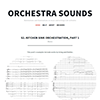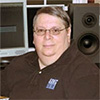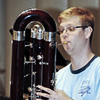Tim’s one of those rare film industry orchestrators that actually has time to keep up a blog. He tends to focus on the practical approach, and discusses the realities of working on a daily basis with both producers and orchestral musicians. He’s also a very active member of the Orchestration Online Facebook group, and often helps keep discussions on track by sharing his experience in the field.
As Tim writes in his Introduction:
“I am very passionate about notation and find the relationship between notation and orchestration fascinating, but neglected in most discussion. When books use examples from the common repertoire they focus on range and color and how so-and-so voiced a chord, but they usually leave out mention of performance practice considerations. This is a critical error as any given excerpt will be performed much differently if presented to the orchestra to read in isolation, with no information about composer or time period. In short, performance practice governs interpretation of notation. Understanding this, and thus understanding the difference between necessary details in the score and wasted ink will help you notate pieces for a quick and accurate performance in the absence of any historical performance practice.”
In the rest of his posts, Tim delivers on this promise, covering topics like divisi, tremolo, harmonics, pizzicato, and over-notating scores. He also includes interviews with top session players like Endre Granat and Jim Thatcher. A weekend spent reading every blog might very well change the course of a developing musician’s career.







